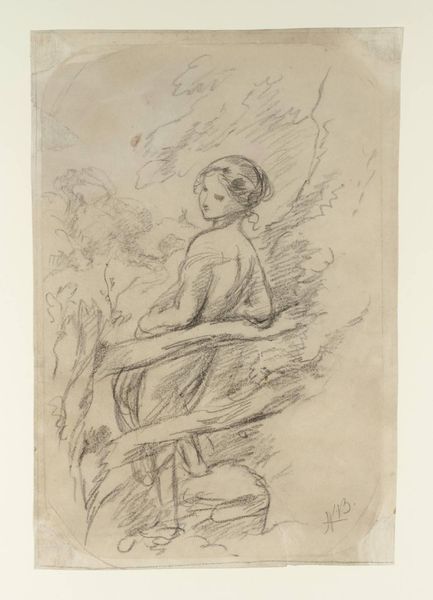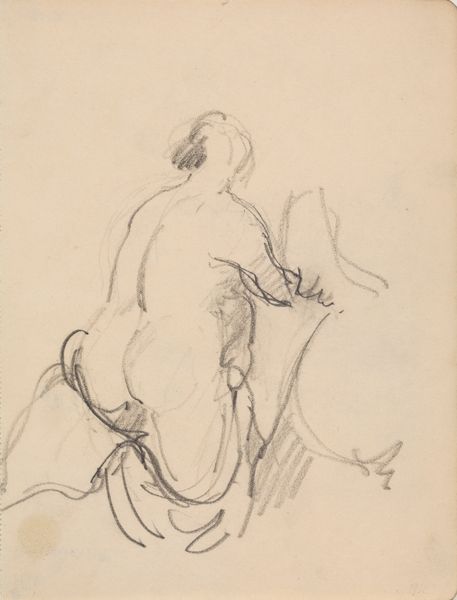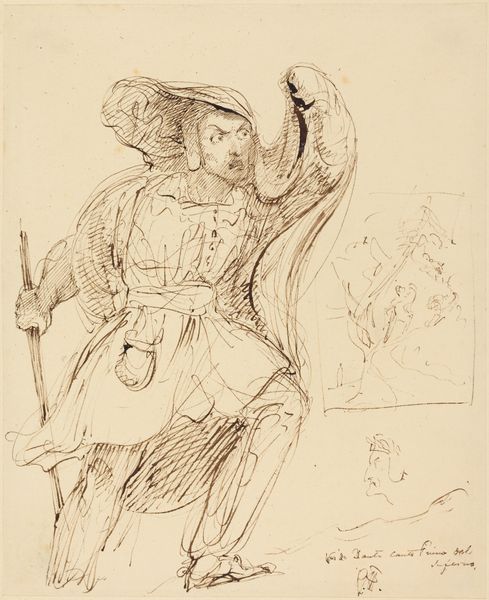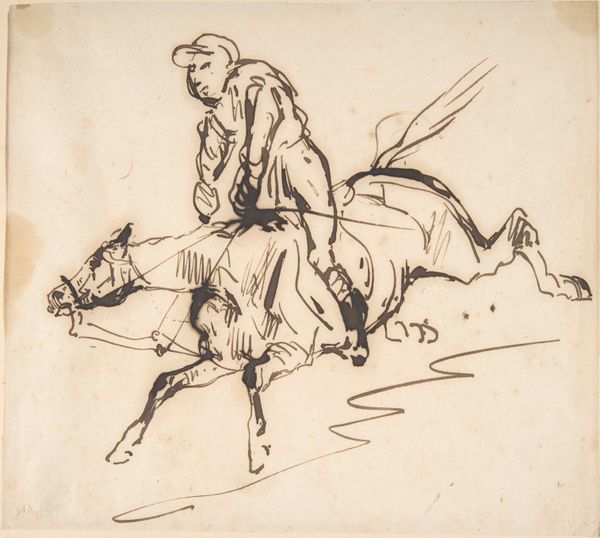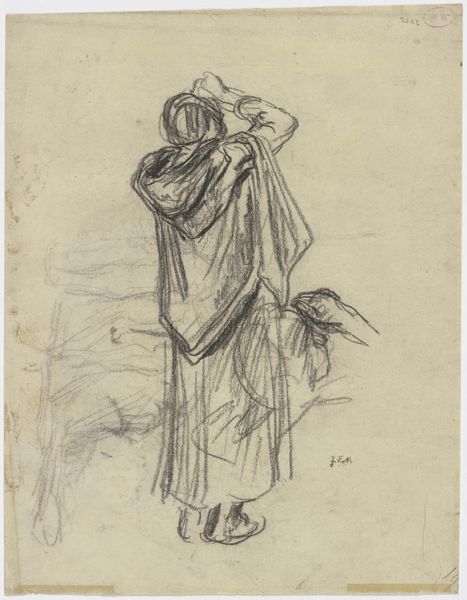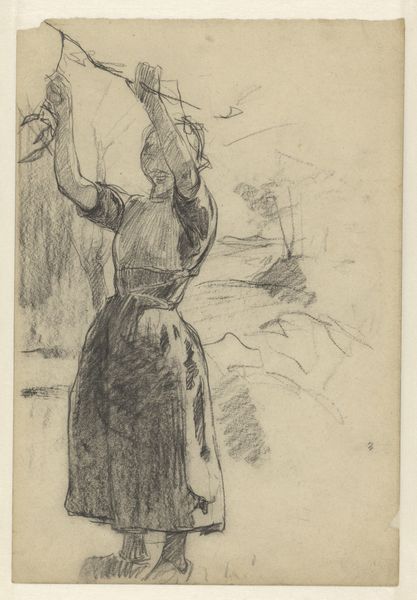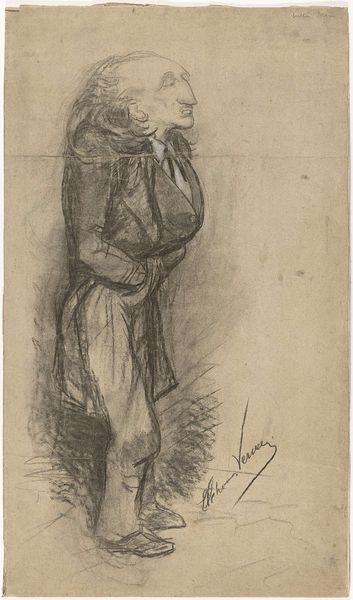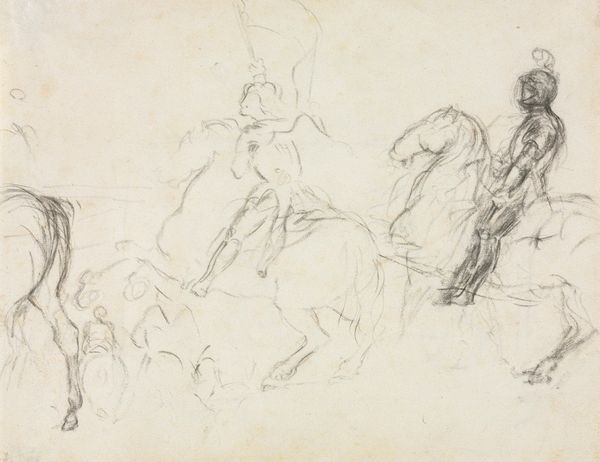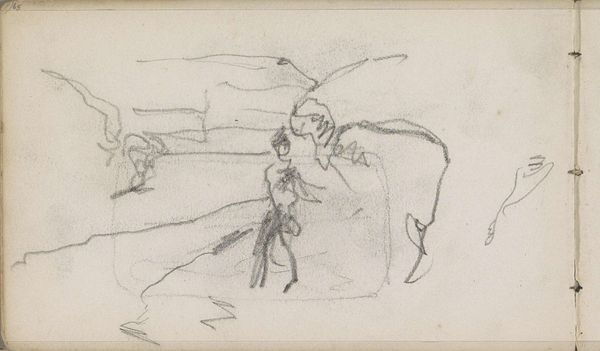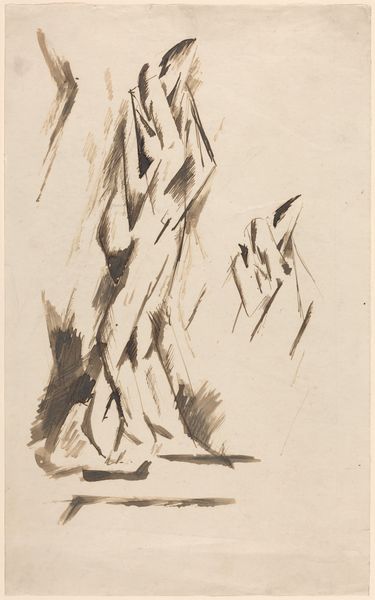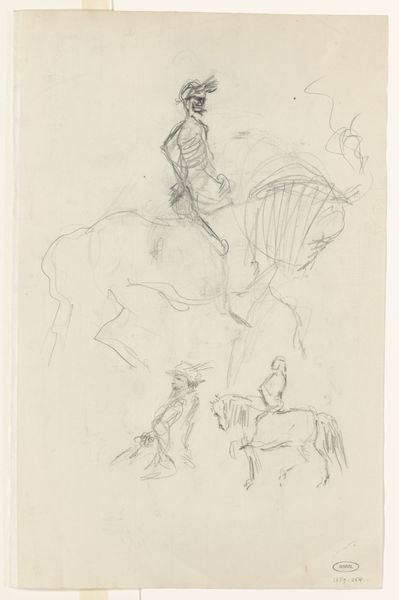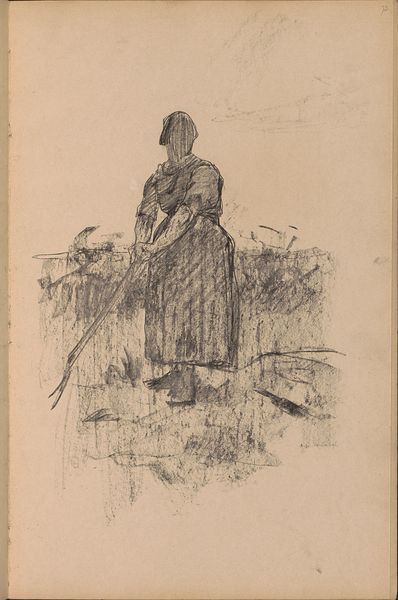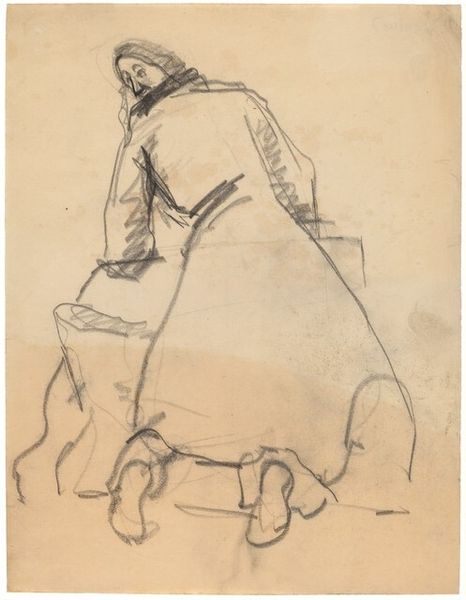
drawing, graphite
#
drawing
#
amateur sketch
#
light pencil work
#
quirky sketch
#
pencil sketch
#
personal sketchbook
#
idea generation sketch
#
pen-ink sketch
#
united-states
#
graphite
#
sketchbook drawing
#
fantasy sketch
#
initial sketch
Dimensions: 6 x 4 1/2 in. (15.24 x 11.43 cm)
Copyright: Public Domain
Editor: This is Walter Shirlaw's "Sketch made on Indian Reservation," from around 1890, created using graphite. It has a rather raw, documentary feel. What can you tell me about its place in art history, and what Shirlaw might have been trying to capture? Curator: Shirlaw’s sketch presents a glimpse into the late 19th-century American perception of Native Americans. During this period, artists often depicted Native populations through a romanticized lens, sometimes informed by direct encounters but also heavily influenced by prevailing socio-political narratives and government policies related to Native American assimilation. This drawing should make us ask if Shirlaw's "sketch" aesthetic suggests respectful immediacy, or if it perhaps others these individuals as subjects for casual observation, or even both. Editor: So, considering that historical context, could the very act of sketching in a reservation be viewed as a political act? Was Shirlaw engaging in a form of visual colonialism, or perhaps something more nuanced? Curator: Precisely. Consider how the act of representation itself holds power. Whose story gets told, and how? Museums and other cultural institutions have historically played a role in shaping public perception. Did Shirlaw see himself as documenting a vanishing way of life, or simply making an ethnographic study? Moreover, how did the community where he was sketching view his presence and work? Editor: That's fascinating, and really gives me a new lens to look at not only this sketch, but sketches of people from any era. Thank you for sharing these historical viewpoints with me! Curator: My pleasure. It's crucial to always consider the context and the potential power dynamics embedded in seemingly simple artistic choices. It reveals how history informs what we see even today!
Comments
No comments
Be the first to comment and join the conversation on the ultimate creative platform.
